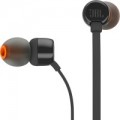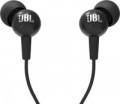Plug
The design of the plug provided in the headphones. This parameter is relevant primarily for models with a mini-Jack interface (see "Connection") — the rest of the plugs are made straight in most cases, exceptions are extremely rare.
—
Direct. The traditional, most simple and unpretentious option is plugs that do not have any bends. Usually, they are compatible without restrictions with stationary audio equipment, PCs, laptops, etc. But for smartphones and other portable gadgets, this option is not always optimal — it all depends on how the gadget is located in your pocket or case. In some cases — for example, when carrying a smartphone in a regular pants pocket — such a wire can be strongly bent around the plug, which quickly becomes unusable; in such cases it is worth paying attention to L-shaped or curved plugs (see below).
—
L-shaped. Plugs angled at 90° in the shape of the letter L. Designed primarily for use with smartphones and other handheld devices: such devices, when worn, can be positioned in such a way that a bent plug is more convenient than a straight one. However, the L-shaped design may also be the best choice for stationary equipment, where the headphone wire approaches the connector at a right angle — for example, this situation is often found in computers and laptops.
—
At an angle of 45°. A variation of the L-shaped plug
...described above, bent not at a straight line, but at a smaller angle (not necessarily exactly 45 °). It is also designed primarily for pocket equipment, and with such an application, such plugs are considered even more convenient and reliable than traditional L-shaped ones. But for stationary devices, it hardly makes sense to specifically look for a model with a similar connector (although such an application is technically quite possible).Cable length
The length of the cable supplied with the headphones with the appropriate connectivity.
The optimal cable length depends on the planned format of the "ears". So, for pocket gadgets,
1 metre or less is often enough, for a computer it is already desirable to have a wire for
1 – 2 m, and preferably
2 – 3 m. And models with a longer cable length —
3 – 5 m or even
more — are mainly designed for specific tasks, such as connecting to a TV or using in recording studios.
Recall that in some models the cable is removable (see below) and can be replaced if necessary with a longer or shorter one. Also note that there are extension cables that allow you to increase the length of the main wire; such a cable may even be included in the delivery, this point (and the length of the additional cable) is usually specified in the notes.
Cable type
The type of cable provided in the design or delivery of the headphones. Note that this parameter is relevant both for wired or combined models (see “Connection type”), and for some wireless models - in particular, earbuds and in-ear headphones
without a mount, where a wire connects one earphone to another.
-
Round. The classic round wire is straight, without braiding or other additional accessories. It is inexpensive and in most cases quite practical, which is why it is found in most modern headphones. The disadvantage is that if the thickness is small, the round wire is prone to tangling; therefore, this option is considered not very convenient for compact headphones, such as in-ear or in-ear (see “Design”), which often have to be carried in a pocket or bag.
-
Flat. The main advantage of a flat cable is that it does not get tangled as much as a round cable, and if something happens it is much easier to untangle. This is especially important for earbuds and in-ear headphones, which are often rolled up for storage or transport. However, larger overhead models can also be equipped with a flat wire.
— Round,
braided. A round wire with an outer braid, usually fabric. See above for details on round wire. And the presence of a braid gives such a cable a number of advantages over the classic one with “bare” insula
...tion. Thus, the wire turns out to be more durable, reliable and resistant to kinks and pressure, tangles less, has a solid appearance, and in some models the braiding also provides shielding from external interference. The downside of these advantages is the increased price.
— Spiral. A round cable, coiled into a spring. The main advantages of a spiral wire are that it practically does not tangle and can significantly stretch relative to its original length. The latter is very convenient if, as you use your ears, you have to change the distance to the signal source. The disadvantages of spiral cable are bulkiness and relatively high cost. Therefore, it is often used in mid-range and top-end headphones (including professional models).
- Round, braided. A cable in the form of two wires twisted into a spiral. This option should not be confused with a spiral wire - in this case we are not talking about a spring. This cable is notable primarily for its unusual appearance; For greater originality, the wiring can be made in different colors. It is also somewhat more tangle-resistant than the classic round one, although a lot depends on the thickness. At the same time, individual wires can be noticeably thinner than a solid round wire, which somewhat reduces reliability.Sensitivity
Rated headphone sensitivity. Technically, this is the volume at which they sound when a certain standard signal from the amplifier is connected to them. Thus, sensitivity is one of the parameters that determine the overall volume of the headphones: the higher it is, the louder the sound will be with the same input signal level and other things being equal. However, we must not forget that the volume level also depends on the resistance (impedance, see above); moreover, it is worth choosing “ears” for a specific device first by impedance, and only then by sensitivity. In this case, one parameter can be compensated for by another: for example, a model with high resistance and high sensitivity can work even on a relatively weak amplifier.
As for specific figures, headphones with indicators of 100 dB or less are designed mainly for use in a quiet environment (in some similar models, the sensitivity
does not exceed 90 dB). For use on the street, in transport and other similar conditions, it is desirable to have more sensitive headphones — about
101 – 105 dB, or even
110 dB. And in some models, this figure can reach
116 – 120 dB. and even
more.
It is also worth noting that this parameter is relevant only for a wired connection according to the analogue standard — for example, via a 3.5 mm mini-
...jack. When using digital interfaces like USB and wireless channels like Bluetooth, the sound is processed in the built-in headphone converter, and if you plan to mainly use this kind of application, you can not pay much attention to sensitivity.Weight
The total weight of the headphones; for true wireless models (see "Cable Type"), the weight of each individual earbud is listed.
This parameter is directly related to the design (see above) and some features of the functionality. Thus, the mentioned true wireless devices are very light, their weight
does not exceed 25 g. More traditional in-ears and in-ears can be noticeably heavier,
up to 50g for in-ears and up
to 100g for most in-ears. Overhead models, for the most part, are quite massive: among them there are many models weighing
200 – 250 g,
250 – 300 g and even
more than 300 g. It should be noted that a significant weight for false ears is often not a disadvantage, but an advantage: it allows them to stay on the head more securely, creates an impression of solidity and reliability, and most often does not create significant inconvenience.

